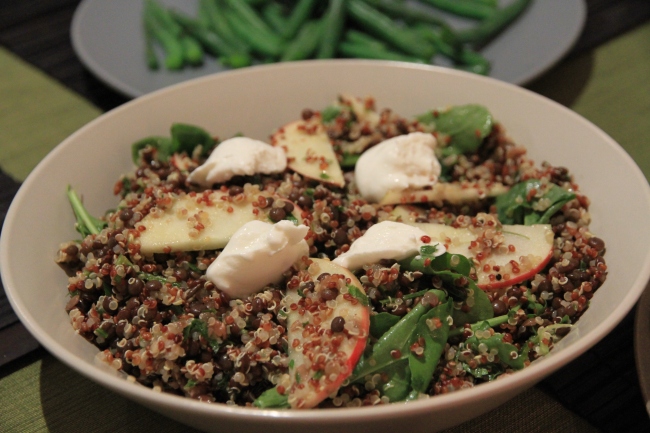
Most of you have probably met the lovely little quinoa since its popularity soared just a couple of years ago. Now lets just clear one thing up before we move on…it is pronounced keen-wah NOT kwin-oah. This ancient little grain (well, its technically a seed) that features on many modern menus has become a staple in many households, including my own.
There are many reasons why I do love this little grain and why I invited it into our household.
The dietitian side of me loves that it is a complete protein source, is gluten free for those who require a gluten free diet and has a low Glycemic Index (GI), meaning it can stabolise blood glucose levels and keep you feeling fuller for longer.
The foodie side of me just loves its aesthetic appeal and nutty texture.
I can’t say that I love quinoa for its taste and flavour (as it really doesn’t have any) but I love that it is a blank canvas for many different flavour combinations.
Ingredients (serves 4)
1/3 of a cup of white quinoa (this will yield ~1 cup cooked)
1/3 of a cup of red quinoa (this will yield ~1 cup cooked)
½ of a cup of black lentils (this will yield ~ 1 cup cooked)
1 small pink lady apple, thinly sliced with skin on
1/4 cup of roasted almonds, chopped
1 large handful of rocket or baby spinach
1/4 bunch of flat leaf parsley finely, chopped
¼ cup of olive oil
Juice of one small lemon
goats curd
Method
Cook lentils - bring water to a boil and add the lentils. Boil for 2-3 minutes and then reduce heat to a simmer. Cook until tender (~25-30 minutes). Lentils must not be overcooked or they will become soft and mushy.
While the lentils are cooking, rinse the white and red quinoa and cook in plenty of water. Just add the quinoa to the cold water, bring to the boil then simmer for approximately 10-15 minutes - once the germ turns opaque and splits from the seed (this will resembles little curls).
Cut the apple and make the dressing while the lentils and quinoa are cooking. To make the dressing just combine the lemon juice, olive oil and chopped parsley (it can be blended in a small food processor).
Once the lentils and quinoa are cooked, combine them with the rocket, apple, roasted almonds and the dressing.
Top the salad with a few teaspoons of goats cheese as I have done in the image.
I love this recipe because it is aesthetically beautiful and the textures and flavours are just lovely. I am sure it will impress all of your family and friends and it is so easy to create.
Bon Appetit!






